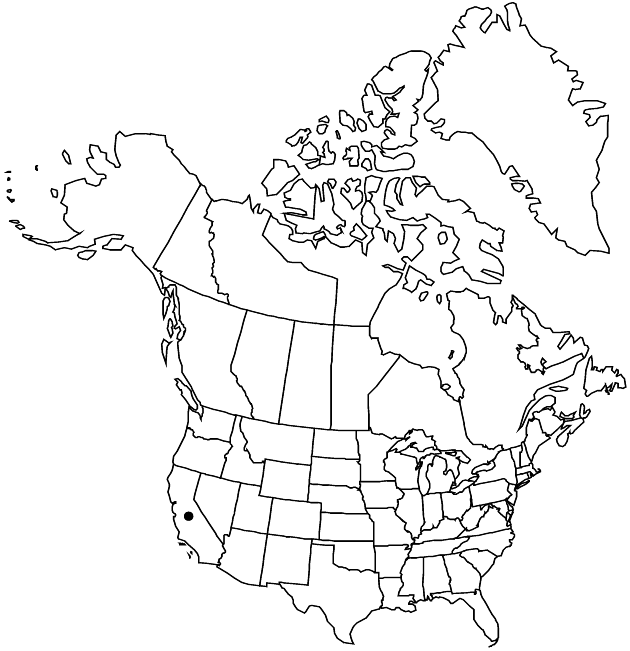Difference between revisions of "Stebbinsoseris decipiens"
Amer. J. Bot. 78: 1025. 1991.
FNA>Volume Importer |
FNA>Volume Importer |
||
| Line 28: | Line 28: | ||
|distribution=Calif. | |distribution=Calif. | ||
|discussion=<p>Of conservation concern.</p><!-- | |discussion=<p>Of conservation concern.</p><!-- | ||
| − | --><p>Morphologic and molecular evidence (K. L. Chambers 1955; C. Irmler et al. 1982; R. S. Wallace and R. K. Jansen 1990) proves that Stebbinsoseris decipiens is an allopolyploid derivative of the hybrid Microseris bigelovii × Uropappus lindleyi. It occurs in a limited area of central coastal California where the parental taxa are sympatric. Diploid hybrids between the parents, produced experimentally (Chambers), had irregular meiosis and were completely seed-sterile. The species is included in Inventory of Rare and Endangered Plants of California, ed. 6 (D. P. Tibor 2001).</p> | + | --><p>Morphologic and molecular evidence (K. L. Chambers 1955; C. Irmler et al. 1982; R. S. Wallace and R. K. Jansen 1990) proves that <i>Stebbinsoseris decipiens</i> is an allopolyploid derivative of the hybrid <i>Microseris bigelovii</i> × <i>Uropappus lindleyi</i>. It occurs in a limited area of central coastal California where the parental taxa are sympatric. Diploid hybrids between the parents, produced experimentally (Chambers), had irregular meiosis and were completely seed-sterile. The species is included in Inventory of Rare and Endangered Plants of California, ed. 6 (D. P. Tibor 2001).</p> |
|tables= | |tables= | ||
|references={{Treatment/Reference | |references={{Treatment/Reference | ||
| Line 55: | Line 55: | ||
|publication year=1991 | |publication year=1991 | ||
|special status= | |special status= | ||
| − | |source xml=https://jpend@bitbucket.org/aafc-mbb/fna-data-curation.git/src/ | + | |source xml=https://jpend@bitbucket.org/aafc-mbb/fna-data-curation.git/src/8f726806613d60c220dc4493de13607dd3150896/coarse_grained_fna_xml/V19-20-21/V19_541.xml |
|tribe=Asteraceae tribe Cichorieae | |tribe=Asteraceae tribe Cichorieae | ||
|genus=Stebbinsoseris | |genus=Stebbinsoseris | ||
Revision as of 16:12, 18 September 2019
Peduncles 15–60 cm. Involucres 6–19 mm. Florets 10–80(–100); corollas yellow. Cypselae brown to purplish, narrowly truncate-fusiform, 5–8 mm, each filled by embryo or no more than distal 0.5 mm vacant, apices not enlarged at bases of pappi; pappi 7–10 mm, scale bodies 3–5 mm, faces glabrous, aristae 4–5 mm. 2n = 36.
Phenology: Flowering Apr–May.
Habitat: Sandy, shale, or serpentine soils, grasslands, coastal scrub, chaparral, closed-cone pine woods, roadsides
Elevation: 10–500 m
Discussion
Of conservation concern.
Morphologic and molecular evidence (K. L. Chambers 1955; C. Irmler et al. 1982; R. S. Wallace and R. K. Jansen 1990) proves that Stebbinsoseris decipiens is an allopolyploid derivative of the hybrid Microseris bigelovii × Uropappus lindleyi. It occurs in a limited area of central coastal California where the parental taxa are sympatric. Diploid hybrids between the parents, produced experimentally (Chambers), had irregular meiosis and were completely seed-sterile. The species is included in Inventory of Rare and Endangered Plants of California, ed. 6 (D. P. Tibor 2001).
